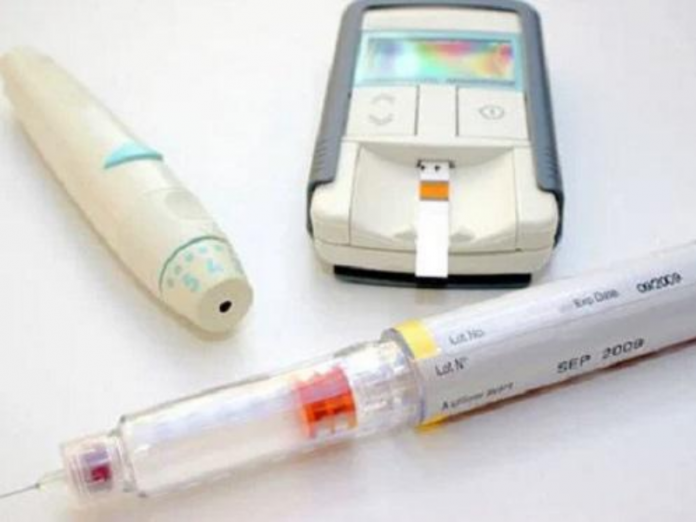Table of Contents
Diabetes: What is it?
Diabetes or diabetes mellitus is a disorder where the pancreas stop working properly, resulting in the stoppage or insufficient production of insulin in the body. This, in turn, affects the blood sugar level of the body.
Whatever we eat is broken down into simple glucose and utilized for energy. The hormone insulin is secreted by the pancreas, and it helps in the movement of the glucose particles into the cells from the blood.
When the pancreas does not produce insulin in the right amount of stops it completely, then the transfer of glucose from the blood to the cells is disrupted. As a result, the glucose starts getting accumulated in the blood, which causes the blood sugar level to rise. If untreated, excess high blood sugar can be fatal.
Unfortunately, there has been no cure for diabetes yet. However, when controlled properly, diabetic persons can have an equally normal life as anyone else.
Types of Diabetes
There are many known forms of diabetes, and they are mainly segregated based on their causes.
Prediabetes
Prediabetes is not diabetes, but it is more like a warning sign to the patients to take care of their lifestyle. In the case of Prediabetes, the patient will have high blood sugar, but not very high to be terminally labelled as diabetic. Hence, any signs or symptoms of diabetes are also absent. At present, more than 60 per cent of people who suffer from Prediabetes is not even aware of it.
If no care is taken, Prediabetes can quickly cause various health hazards, such as heart diseases and occurrence of Type-2 diabetes. To prevent this, one must change their lifestyle towards the healthier side. Starting exercises, losing body fat and weight, and slightly controlling the diet is enough to control Prediabetes in most cases.
Type-1 Diabetes
Type-1 diabetes often starts at a very young age. Due to this reason, it is also known as juvenile-onset diabetes and is also termed as insulin-dependent diabetes. The cause of Type-1 diabetes is our immune system. When the antibodies present in the body attack the pancreas, it affects the insulin-releasing cells in the pancreas.
Such auto-immune conditions can also be genetic or hereditary. Even a person who has abnormal pancreatic cells can face Type-1 diabetes.
The most common hazard associated with Type-1 diabetes is diabetic retinopathy, where the blood vessels in the eyes get damaged. Type-1 diabetes can also cause diabetic neuropathy, and diabetic nephropathy, which causes problems in the nerves and kidneys, respectively. Those who are affected by Type-1 diabetes are also prone to stroke and heart diseases.
For the treatment of Type-1 diabetes, insulin is administered in the body via syringes. Other than that, jet injectors, insulin pens, and pumps can also be used for administering insulin in the body through various body parts, such as belly or through the catheter tube.
For the checking of Type-1 diabetes, the A1C blood test is conducted. In this test, the blood sugar levels over the last 90 days are recorded. This data is used to check how well a patient is maintaining the blood sugar level.
Details about Type-1 diabetes are given further below.
Type-2 Diabetes
Type-2 diabetes is mainly found in adults, and it is also known as adult-onset or non-insulin-dependent diabetes. However, even young children have shown to be affected by Type-2 diabetes over the last two decades. The main reason for this is the unhealthy lifestyle of the majority of people. Over 60 per cent of people do not maintain a healthy body, with most of them being obese and overweight. Such sedentary habits are one of the primary causes of Type-2 diabetes.
Most of the diabetic patients are affected by Type-2 diabetes. In this case, the pancreas does create insulin. However, the amount is not adequate, and the body cells slowly start becoming insulin resistant. This is mainly seen in the muscle, liver, and fat cells.
Obese people are highly prone to be affected by Type-2 diabetes. The insulin resistance can also be caused by obesity, and this puts more stress on the pancreas. As a result, blood sugar levels start to rise. With time, the adequate amount of insulin production stops, leading to Type-2 diabetes.
Here also, you can do the A1C blood test to keep track of your blood sugar level. Since there is not any cure, patients are advised to lead a relaxed and healthy lifestyle. This includes meditation, using sugar substitutes, exercising, maintaining a standard weight and controlling their diet. Apart from these techniques, medication, as prescribed, should also be followed.
For further details about Type-2 diabetes, keep on reading this article.
Gestational Diabetes
This form of diabetes only occurs in females during the time of their pregnancy. The body can become insulin resistant during pregnancy too, which gives rise to gestational diabetes. Since it affects the baby also, pregnant mothers should ensure full control to ensure the development and proper growth of the baby.
However, not all pregnant women get gestational diabetes. It is hardly found in 5 per cent of pregnant women and is not permanent. In the majority of cases, once the pregnancy period is over, gestational diabetes also goes away. However, some women do develop Type-2 diabetes from gestational diabetes after some time.
If untreated, it can have a severe effect on the baby. Several complications can occur, which include abnormal bodyweight, breathing trouble, and deformation of the body parts. Such abnormality can affect the mother too, who might have her organs damaged.
A pregnant mother should control her meals such that too much fat is excluded and nutrients are involved. She should also take massages, do regular light exercises and keep her weight normal. Blood sugar level can be controlled by taking insulin as well.
Other Diabetic Types
Some other causes can also cause diabetes. These are rare, but not unheard of. In such cases, the patients may have undergone medications, surgeries, infections, or damaged their pancreas somehow.
In any case, it is important to keep a check on the blood sugar levels and maintain the lifestyle accordingly.
Even among all of these diabetes types, the Type-1 and the Type-2 diabetes are generally the most commonly found types among patients. Hence, we will discuss these two types of diabetes in details below.
Type-1 Diabetes
As stated before, the Type-1 diabetic patients do not produce sufficient insulin in their body. This type of diabetes mainly occurs at a very young age.
Apart from genetic and hereditary causes, Type-1 diabetes can also be formed by viruses. Research is going on at full pace to find some way to prevent the occurrence of Type-1 diabetes. However, it has not been much success so far. Therefore, the main treatment methods lie in lifestyle, staying healthy, managing diet, and taking medications.
Type-1 Diabetes Symptoms
There are many symptoms which are visible when a person is affected by Type-1 diabetes. It is essential to know about these symptoms so that you can act as early as possible. Type-1 diabetes symptoms are given below.
Increase in Thirst
Patients with Type-1 diabetes can suddenly have the urge to drink water more than normal. As a result, the sensation of being thirsty will increase.
Increase in Urination
Type-1 diabetic patients will also be having the urge to urinate more often. This is because, with increased thirst, the water intake in the body will be more. This will naturally create the need to urinate more often than usual.
Uncontrolled Urination
When Type-1 diabetes suddenly occurs, young children can fail to hold their urine. As a result, young children who are well trained can suddenly start peeing in the bed while being asleep.
Increased Hunger
With the start of Type-1 diabetes, the children will also feel more hungry than usual. It can happen that a child just had a full meal, and within half an hour, he or she is feeling hungry. In this case, he or she is most likely a patient of Type-1 diabetes.
Sudden Weight Loss
In Type-1 diabetes, a person may all of a sudden lose quite an amount of weight. This is abnormal, and this is because the structural integrity of the stored carbohydrates and fats in the body suddenly gets degraded. In any occurrence of unintended loss of weight, he or she must go for a diabetes diagnosis.
Mood Fluctuation and Irritation
With somebody functions not working correctly with Type-1 diabetes, there can be some hormonal changes in the body. This can cause sudden irritation and mood swings. As a result, nothing feels right, and there is always a sense of hostility in mind.
Increased Weakness and Fatigue
With Type-1 diabetes, the body can lose a lot of its stored energy quickly. Also, glucose does not enter the body cells properly, leading to less energy production. Hence, the body becomes easily weak, and a constant feeling of fatigue remains due to lack of energy.
Blurriness of Vision
Type-1 diabetes can also cause the vision to become blurred. This is because, with the accumulation of the glucose on the blood, the nerves connected to the eyes are badly affected. The body can also undergo sudden loss of glucose, which may cause the vision to be blurry. Sometimes, the patient may also undergo a blackout due to a lack of glucose in the brain cells.
Whenever such symptoms pop up, it is always wise to go and visit a doctor immediately. Since diabetes has no cure, it is wise to change the lifestyle as early as possible to lead a sustained and healthy life ahead.
Now, let’s talk about Type-2 diabetes, which is the most common type of diabetes found among diabetic patients globally.
Type-2 Diabetes
In Type-2 diabetes, the metabolic process of the body regarding the glucose particles is done improperly. This is also due to the lack of an adequate amount of insulin produced in the pancreas.
Usually, with Type-2 diabetes, the body starts becoming resistant to the effects of insulin. Otherwise, the pancreas gets somehow affected, and the amount of insulin produced is not enough to help the glucose particles enter the body cells properly.
It has been generally seen that Type-2 diabetes is more common among adults. At present, even children are not exempted from it. As stated before, the main cause for the occurrence of Type-2 diabetes is the unhealthy lifestyle of the younger generation. Most of the young kids today have no regards to their health. They are growing up overweight and obese, which is affecting their health and making them susceptible to be affected by Type-2 diabetes easily.
As usual, no cure has yet been found for Type-2 diabetes, but it can be controlled to a great extent by leading a proper and healthy lifestyle. Leading a healthy lifestyle includes eating properly, doing regular exercising, relaxing, and maintain an overall good health level. Apart from these normal steps, patients are also needed to take medications as and when required.
Type-2 Diabetes Symptoms
The symptoms of Type-2 diabetes are mostly the same as Type-1 diabetes. These symptoms often take time to come up in some people, while others may see a sudden appearance of such symptoms.
These include-
- Increase in thirst
- Increase in urination rate
- Increase in hunger
- Sudden loss of weight
- Feeling fatigued all the time
- Blurry vision
- Wounds taking more time to heal
- Getting infections repeatedly in the neck and dark-skinned body parts
When noticing any of these symptoms, you must visit a doctor immediately.
Causes
Apart from obesity and being overweight, Type-2 diabetes can also be formed due to genetic factors. The sedentary habits are said to be the most common cause of Type-2 diabetes, and being inactive simply triggers the chances.
Treatment
The proper treatment of Type-2 diabetes is by administering insulin in the body. When insulin is introduced in the blood, it enables the glucose to enter the body cells. Thus, your body gets the required energy, and the blood sugar level starts to drop within the normal range.
Type-2 Diabetes Risk Factors
The factors which increase the risk of being affected by Type-2 diabetes significantly are given below.
Weight
Type-2 diabetes is mainly prevalent among overweight people. However, it is not a necessary factor. It has been seen that obese people have a higher chance of being Type-2 diabetic patients.
Distribution of Fat
Fat is stored in various body parts. Some people have fat stored in their thighs and hips, while others get fat stored in the abdomen. It has been seen that people with fat stored on the abdomen are at a higher chance to be affected by Type-2 diabetes.
Lack of Activity
The more inactive you are, the higher is the chance of catching Type-2 diabetes. Physical activities are considered very important in keeping the body healthy. Hence, the lack of activities increases the risk of Type-2 diabetes.
Family History
Those who have Type-2 diabetic patients in their family are more prone to develop it.
Age
Type-2 diabetes occurs with a higher probability with age. People aged 45 or above have a higher chance of being affected by Type-2 diabetes than younger people.
Conclusion
Whatever the type of diabetes may be, it has to be controlled. Since no cure is available, proper treatment via insulin medication and leading a controlled and healthy lifestyle is the key to have a normal life in diabetic patients.








